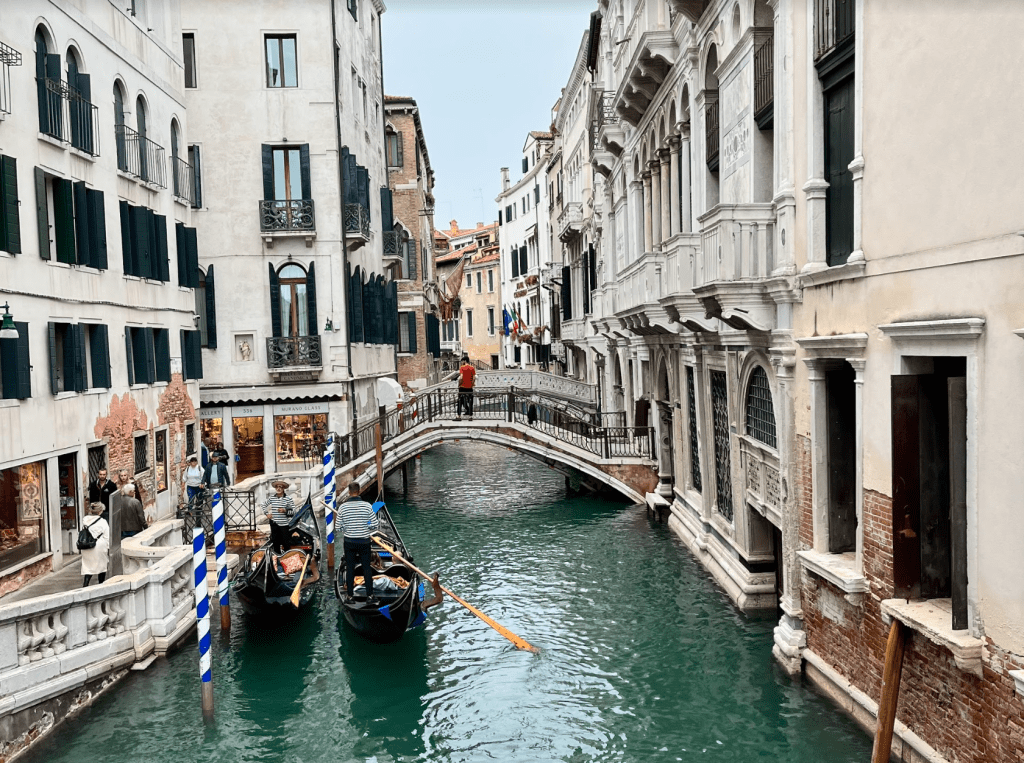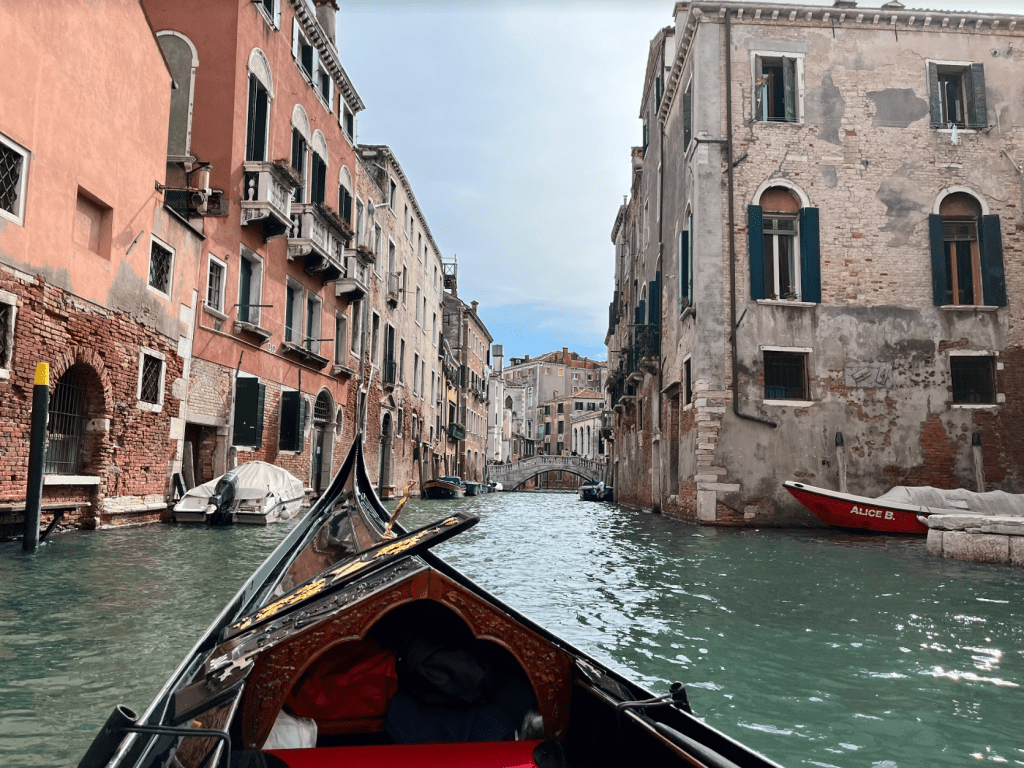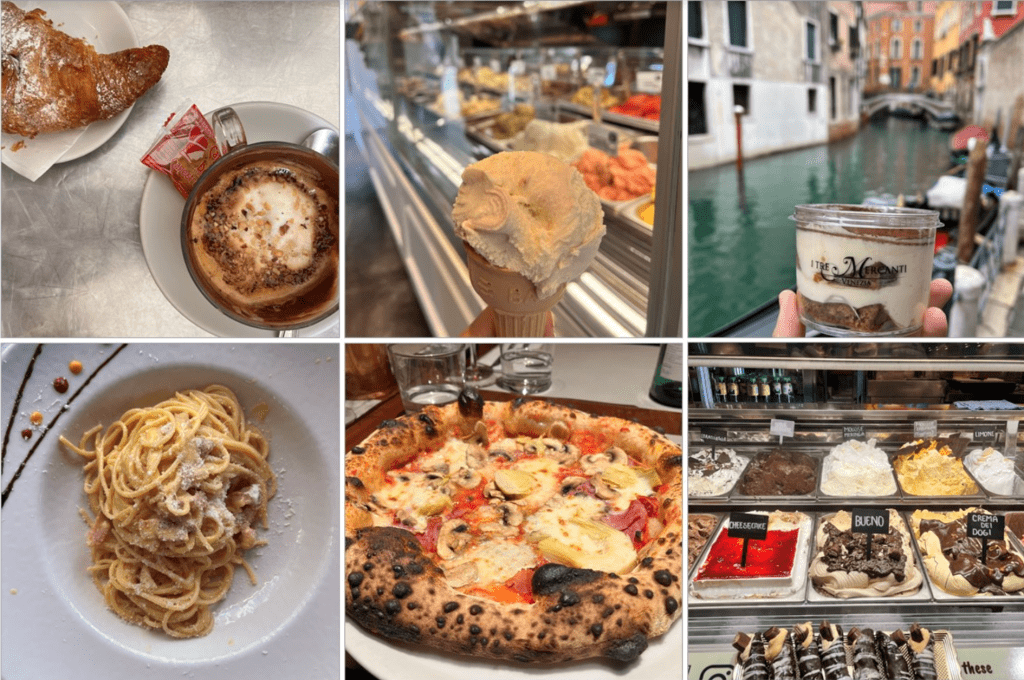As a last hurrah to end my semester studying abroad, my friends and I decided to head up to Tromsø, a Norwegian town located in the Arctic Circle.
In Tromsø, we were closer to the North Pole than France!
We spent the first day exploring around downtown Tromsø, shopping for souvenirs, and visiting their local Christmas market. By the time 2pm rolled around, the sky was completely dark; it was absolutely crazy to see! We also stopped to grab some hotdogs, and we bought Norwegian groceries to make ourselves dinner for the Friday and Saturday we were in Norway.
Iconic Scandinavian hot dogs from a food cart in downtown Tromsø made of reindeer and beef. This picture was also taken at 2:30pm.
We woke up the next day bright and early to cook ourselves breakfast and then we rented ice skates at a local outdoors store in downtown Tromsø. We walked uphill for thirty minutes to Prestvannet Lake which by this point in the year has been completely frozen over! The ice was at least 10 cm (about 4 inches) thick, and there were dozens of Norwegians skating on the ice. A group of college aged students played hockey in one corner of the lake and speed skaters of all ages zoomed around the perimeter of the lake. While some parents taught their kids how to ice skate, parents with younger children opted to glide nonchalantly across the ice pushing a stroller, baby in tow. Norwegians are exposed to ice even before they learn to walk! Even weirder, every once in a while, a person on a bicycle would zoom across the ice instead of biking around the lake.
This time of year, Tromsø experiences the Polar Night where there is light for only a couple of hours in the day. Even then, the sun is too low to see it above the horizon, so there is a permanent sunset and sunrise at the same time. This casts some of the most gorgeous colors across the sky. Once it started getting too dark to safely skate (which was around 2:30pm), we returned the skates and grabbed some authentic Norwegian lunch.
The breathtaking colors of the Polar Night. For reference, this picture was taken at 12:30pm, but it looks like it could be 5pm.
Afterwards, we headed to Fjellheisen: a cable car located on the mainland that takes you halfway up the Tromsdalstinden Mountain and provides a good viewpoint of the city. We spent that time going aurora hunting— they were not too difficult to spot!
The city lights of Tromsø from the top of the Fjellheisen.
The Northern Lights, or the Aurora Borealis, are formed through the bombardment of solar radiation with the Earth’s atmosphere. The Sun releases charged particles called solar winds from its upper atmosphere or corona. The Earth’s magnetosphere protects the Earth from these charged particles like a shield; however, some of these charged particles are trapped in the Magnetosphere’s Van Allen Belts and are funneled towards the poles through the Earth’s magnetosphere. These ions then collide with particles in the Earth’s atmosphere causing polar auroras. These interactions usually occur at a height between 90-120 km, and the color of the aurora is dependent on what altitude and what atoms the solar winds collide with. In the North, the Polar Aurora is called the “Aurora Borealis”, and in the Southern Hemisphere, it is called the “Aurora Australis”.
Because of how the Polar Auroras are created, they are largely dependent on the Sun’s activity. The Sun cycles every 11 years between solar max (where solar activity is at a maximum) and solar minimum (where solar activity is at a minimum). Fortunately for me, the Sun is approaching its Solar Max in 2024, so we are approaching an increase in solar activity— i.e. we are more likely to encounter the Aurora Borealis! While technically they are happening all the time, they can only be seen when it is dark enough, so ideal conditions are during the Winter month nights when there are no clouds in the sky and very little light pollution. Additionally, the Northern Lights only exist at high latitudes, and because of Tromsø’s location in the Arctic circle, Tromsø is an ideal location for potentially spotting them!
The first time seeing them was invigorating. Early in high school, I attended a NASA camp where I designed my own NASA mission centered around heliophysics and the Van Allen Belts. I spent the week-long camp learning anything and everything I could about the phenomenon; I was completely hooked. This camp (and the topic) kickstarted my entire engineering career and fascination of space. To see these in person, my heart would not stop beating at a mile a minute. I couldn’t help but smile, laugh, and dance with my friends in the night. They would appear suddenly in undulating lines streaking across the sky growing in strength and color over time. They would shimmer and dance amongst the stars, and then they would disappear just as quickly as they appeared. As we hiked up the mountain, we found a secluded valley that blocked out the lights from the city. We laid on a frozen lake and spent time watching the auroras. At one point, the entire sky above us was covered in them. It was mesmerizing. Not to be dramatic, but the Northern Lights are the culmination of my career and seeing them was the perfect send off to this semester. This trip will go down as my favorite trip this semester.
The Aurora Borealis from my phone camera.



